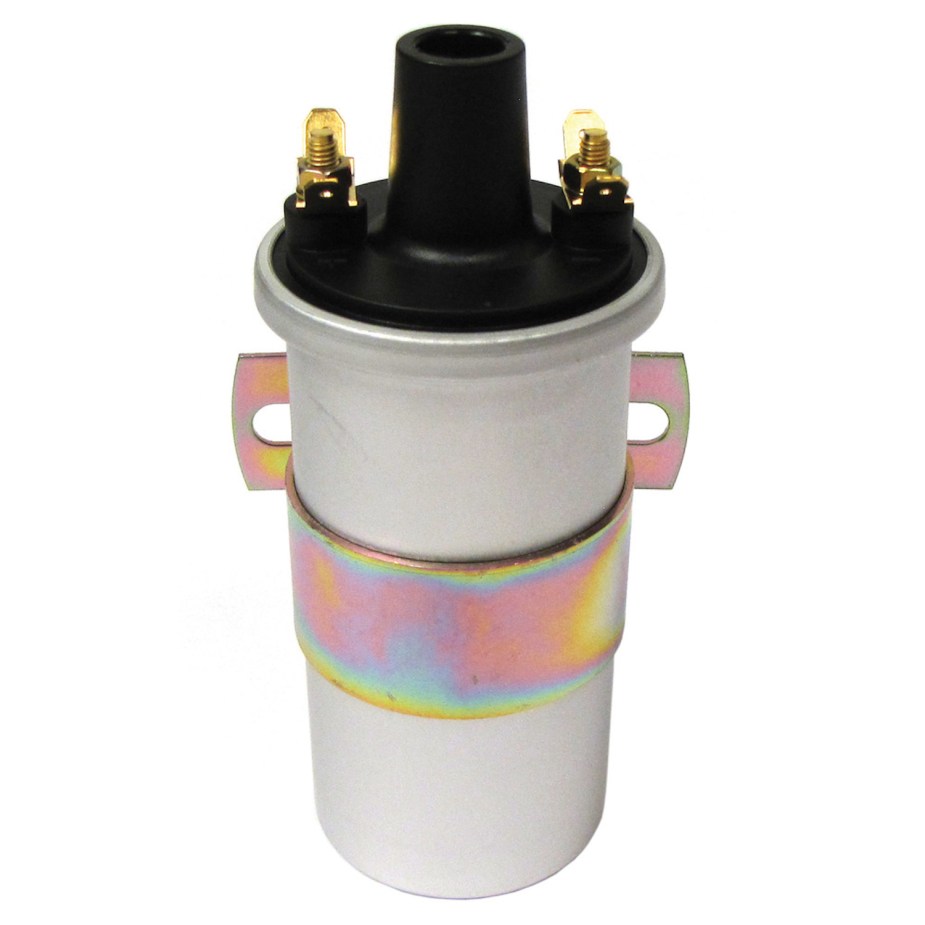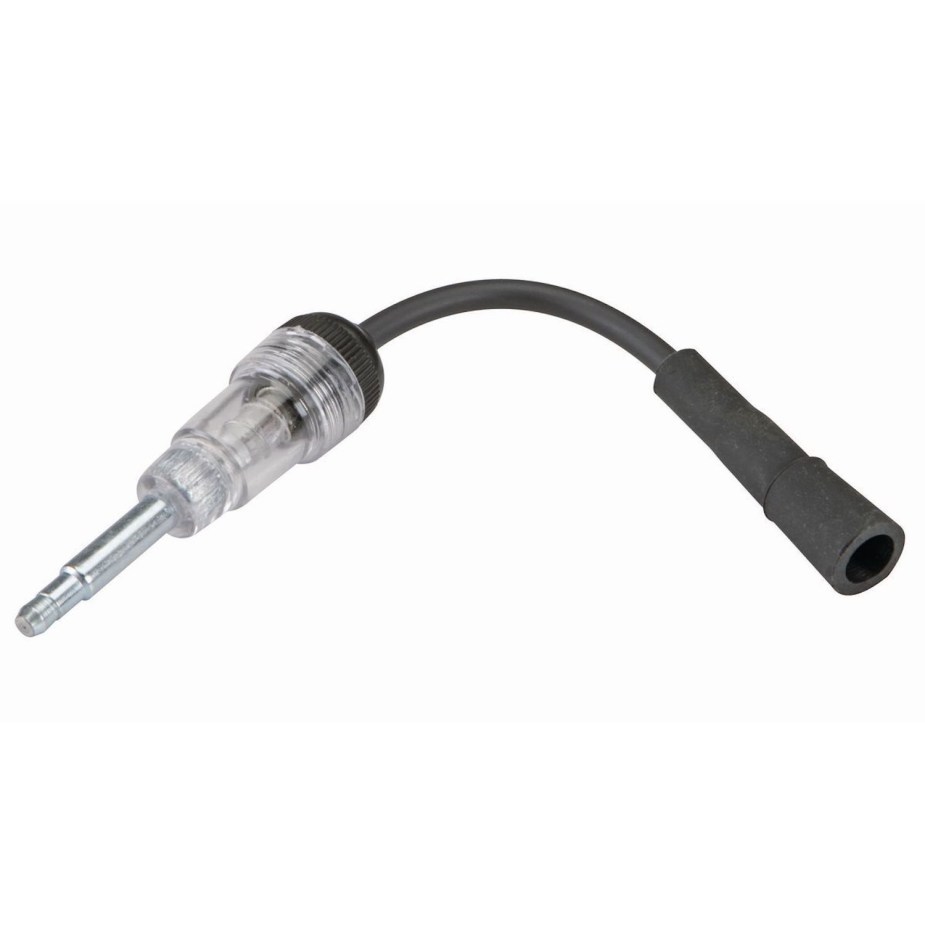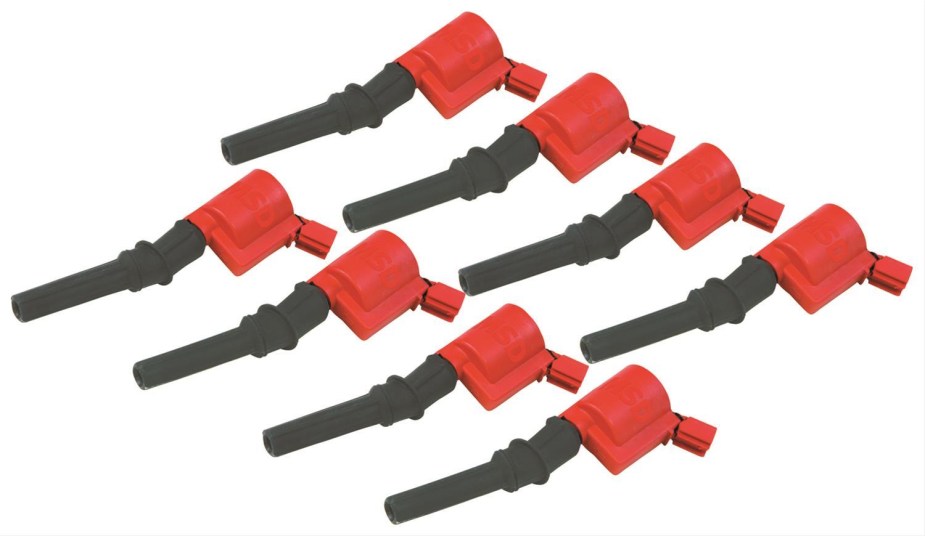
Test if Your Engine Woes Are Caused by a Bad Ignition Coil
Is your car misfiring, idles rough, or has trouble starting? You may have weak spark caused by a worn-out ignition coil. Or you may just need to clean up a spark plug. With the proper tools, it will be relatively easy to find out if the problem is your ignition coil to better plan your vehicle’s maintenance. I’ve troubleshot ignition spark in both new and classic vehicles. Read on to find out what has worked for me.
What is an ignition coil?
You probably know your car has a 12-volt electrical system. But did you know your spark plug needs around 40,000 volts to ignite the air and gas mixture in your cylinder? The ignition coil transforms this current.

Technically, an ignition coil is what’s called an electromagnetic induction-type transformer. But you don’t need to memorize that. All you need to know is that 12 volts go into it, thousands of volts come out of it, and it wears out over time.
Different types of vehicles have different types of ignition coils (more on that at the end of the article). But the principles of testing your ignition system remain the same. If you are a dedicated DIYer, you can even learn about the state of your engine spark yourself before enlisting a professional to help you repair your vehicle.
How do you know your engine has weak spark?
If your engine is idling rough, misfiring, or starting hard, one culprit may be weak spark. Using a spark tester, you can confirm you have spark at the spark plugs. Then you can work backward through your electrical system to identify which component is malfunctioning.

If your vehicle was built since 1996, an onboard diagnostics or “OBD II” check engine light tester is your best friend. I have one that connects to my phone via Bluetooth I especially love because I can keep it in my glove box. But there’s a range of testers available.
If your engine is misfiring, you can read the “code” it is “throwing” with your code reader. This tester will tell you which cylinder is misfiring or if your engine has another problem entirely. If one cylinder is misfiring, swap spark plugs. If the misfire moves, it’s time to clean and re-gap your spark plugs–or replace them entirely.
If your plugs are good, your engine may have weak spark.
How do you test an engine with weak spark?
You’ll want to invest in a spark tester light. Remember, your electrical system is putting 30,000-40,000 volts to your spark plugs; a regular voltmeter won’t cut the mustard. The simplest inline spark tester is a light you attach to your spark plug wire and costs $5-$15

The cheapest in-line spark tester can tell you whether your ignition system has spark or not. More expensive testers have an adjustable air gap so you can tell just how strong your ignition system’s spark is–according to CareMyCars.com.
You are going to plug this tester in between the spark plug wire and a plug that is making a strong spark. Then step bag and have someone try to start your engine and not whether the light flashes.
Next, plug the tester in above the cylinder with weak spark. Does the tester light up? Is it just as bright? If you have an adjustable tester, begin increasing the gap to see how strong the spark is.
There are many types of electrical systems, including different types of ignition coils. But the premise behind testing them all is the same: you are going to move that spark tester from one component to the next.
I like to move my tester from my plugs toward my batteries. The key is to keep doing tests until you establish which component is malfunctioning. Remember, the component malfunctioning could even be one of the wires.
If you trace weak spark or no spark all the way back to your ignition coil, you have eliminated many possible problems. Testing your ignition coil will require a more expensive specialized tool, a multimeter.
You can use a multimeter to test the level of resistance between two terminals on the coil–or how difficult it is for electricity to flow through. Which terminals you need to test–and how much resistance the coil should offer–depends on the type of coil you have. So for this test, you will need a repair manual.
Keep scrolling for a video on how to test your ignition coil. But first, a bit more on the types of coils.
Are all ignition coils the same?
As engine electrical systems have evolved, so have ignition coils. In the 1960s, a single ignition coil fed 40,000 volts to a distributor which put that power to each plug in turn. A modern pencil/stick ignition coil is built right into certain spark plugs and eliminates the need for spark plug wires.

Here are the types of ignition coils:
- Distributor ignition coils: found on classic vehicles with a spinning distributor
- Block ignition coils: all spark plug wires connect directly to a single ignition coil pack
- Pencil or stick coils: part of the spark plug unit
- Plug top coils: also called coil-on-plug are connected to spark plugs but a separate unit
- Ignition coil rails: a rail running along the engine with a coil for each plug
So there you have it: how to test for weak/no spark and identify whether the problem is your ignition coil. Don’t be afraid to ask your local auto parts store if they have an electrical system tester, which may give your further insights. You can also ask your local mechanic for a diagnosis and estimate to learn a bit more about your engine woes.
Next, learn how to read your spark plugs to learn your engine’s secrets, or see how to test both your spark plugs and coil-on-plug ignition coils–even if your engine has recessed plugs–in the video below:
Next, see how to test various types of ignition coils in this second video:



